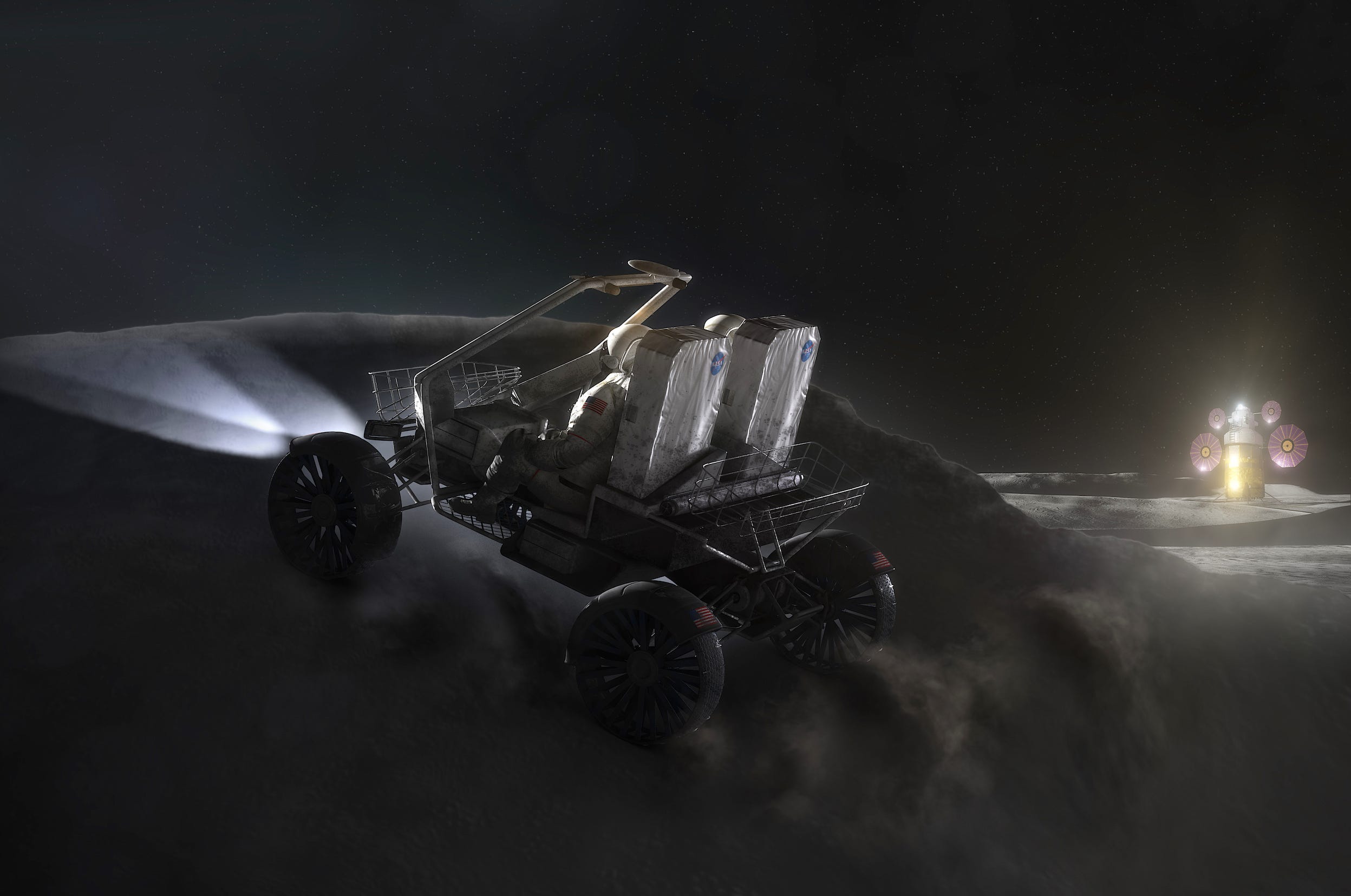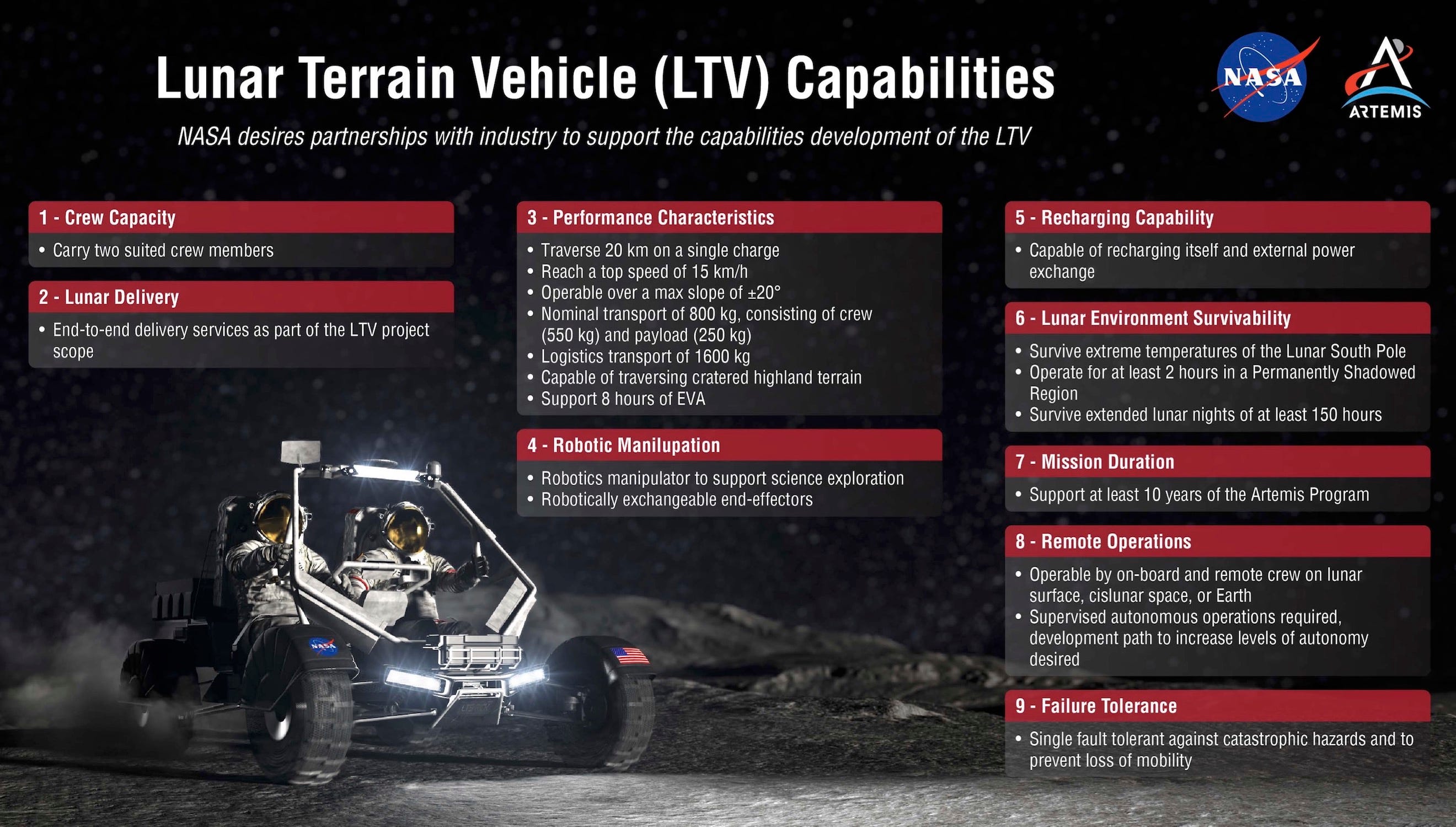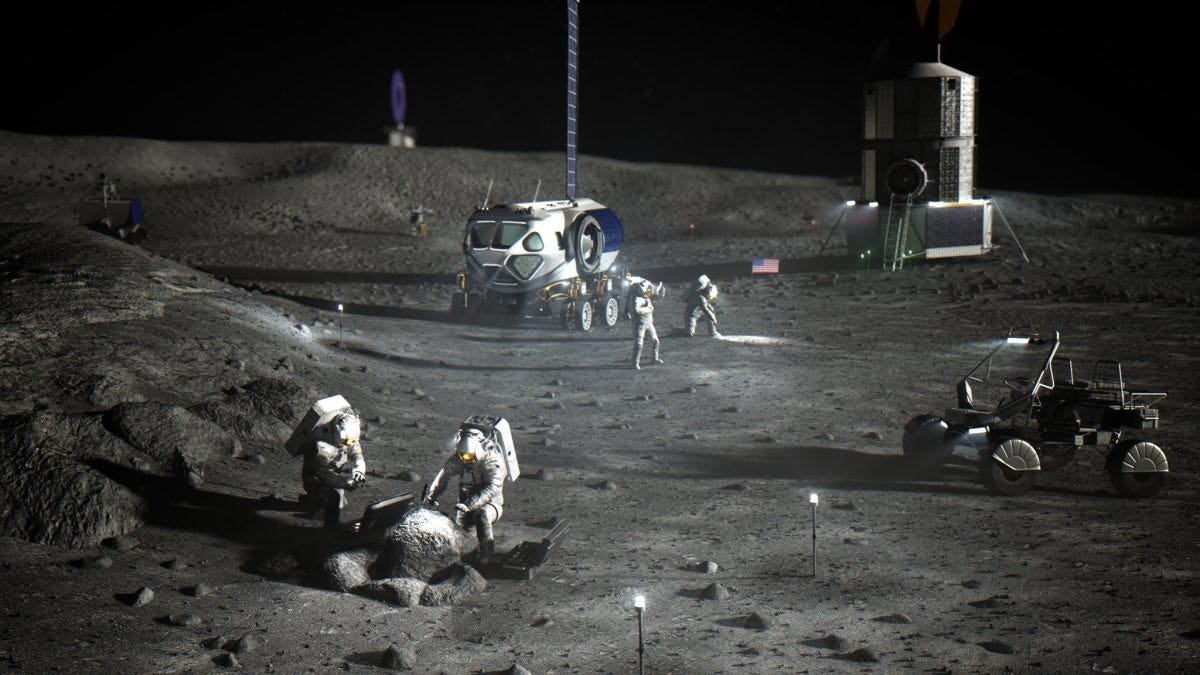Everything we know about the rover NASA's Artemis astronauts will drive on the Moon
The Lunar Terrain Vehicle will be vastly more capable than the rover rode by Apollo astronauts.
Update on April 8, 2023: This article has been superseded by a new one published based on later developments: One giant leap for Moon rovers
In August 2021, NASA revealed initial details on its plan to purchase a commercial rover which Artemis astronauts will drive on the Moon later this decade. Before soliciting proposals for the same later this year, NASA laid out the capabilities it wants this Lunar Terrain Vehicle (LTV) to have, and seeked input from U.S. companies for the same. At another such industry day held this August 30, followed by an amendment, NASA has provided more details on the LTV plans.

Capabilities
Since NASA intends to sustain its return to the Moon, the LTV will be far more capable than the Lunar Roving Vehicle (LRV) used by Apollo astronauts, and more sophisticated than even the current crop of Mars rovers.
- The LTV will be an unenclosed, all-electric rover that two suited astronauts can drive on the Moon for up to 20 kilometers on a 8-hour roundtrip without the rover needing a recharge. That’s roughly thrice Apollo LRV’s range and twice its drive time.
- Unlike Apollo, the LTV will be used across multiple Artemis missions for at least 10 years. This means the LTV must survive frigid night-time temperatures on the Moon’s south pole every month, which can last from a few hours up to at least 150 hours even in favorably selected high-altitude locations. That’s even better than NASA’s upcoming polar-water-studying VIPER rover, which is being designed to survive complete darkness periods of about 96 hours by parking at pre-identified high-altitude spots throughout the mission.
- The LTV should be able to traverse 20 degrees slopes, and in general navigate the challenging rugged terrain at the Moon’s south pole, which is where all currently planned Artemis surface missions will take place. Within this slope limit, the LTV should be able to spend up to two hours in permanently shadowed regions, where temperatures are well below -180 degrees Celsius. Combined with the same requirement for commercial Artemis spacesuits, this sets the stage for astronauts exploring and bringing cryogenic samples of pristine, precious lunar polar volatiles to Earth for meticulous studies, an identified key priority for Artemis science. To that end, NASA would also like the LTV to have a robotic manipulator arm for deploying science instruments, for example. Exciting stuff.
- Given its criticality to astronauts being able to safely return to the lander or Artemis Base Camp, the rover’s mobility must be at least single-fault tolerant.
- NASA wants the rover to be remotely operable from anywhere between the lunar surface and Earth. The agency also desires the rover to have sufficient autonomous capabilities. These requirements chiefly come from NASA’s Science Mission Directorate to ensure efficient scientific use of the rover when a crewed mission isn’t ongoing, which is at least 11 months of the year!
- In addition to a suited crew of two weighing 550 kilograms, the LTV must transport up to a total of 250 kilograms of cargo, science instruments, lunar samples and technology demonstration payloads between desired points on the Moon. For non-crew traverses, the LTV would be able to carry 1600 kilograms at reduced speeds.

When NASA revealed these details, it intended the rover to be launched to the Moon in 2027 on a commercial lander part of the agency’s CLPS program. However, NASA indicated in January 2022 that the Artemis V mission, launching no earlier than 2028, will carry the crewed lunar rover instead.
While we wait for NASA to solicit LTV proposals from U.S. companies sometime this year, here are all the proposers we know of.
- Lockheed Martin is partnering with General Motors, who helped develop Apollo’s LRV, to build an LTV-class rover sporting an MDA-provided robotic arm. It will be able to preposition itself near a landing site prior to astronauts arriving on future Artemis missions, and conduct autonomous science operations.
- Northrop Grumman and its partners are building an LTV-class autonomous rover in both crew and cargo variants.
- Astrolab will bid their Flexible Logistics and Exploration (FLEX) rover. Unlike Lockheed and Northrop’s concepts, as far as we know, FLEX already has a fully-functional terrestrial prototype, which has been tested for mobility, crewed and remote operations, and to deploy a variety of large payloads.
- Teledyne Brown Engineering, Sierra Space, Nissan North America and Bridgestone have revealed their partnership to bid an LTV-class rover too.

It should be noted that the LTV is just one of the two rover types part of NASA’s Artemis Base Camp, which aims to build the infrastructure necessary for at least a few astronauts to live long-term on the Moon. The other rover is a pressurized, habitable one, which would enable astronauts to explore the Moon’s south pole up to 45 days at a time. NASA will presumably solicit proposals for this even more advanced vehicle at a later stage.

The solicitations for these proposals will be published later this year on the agency’s ROSES-2022 Blog.
P.S. NASA has made a really cool video ad for the LTV.
→ Browse the Blog | About | Donate ♡
